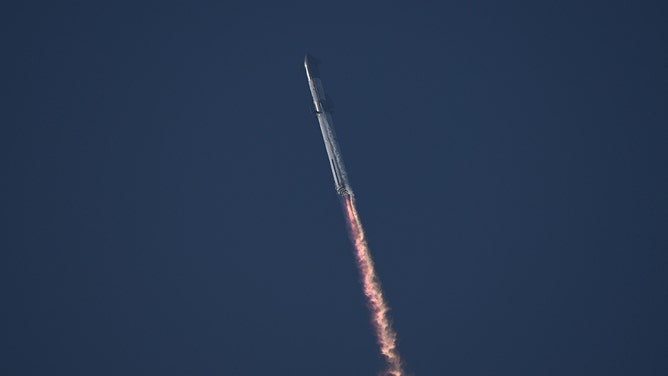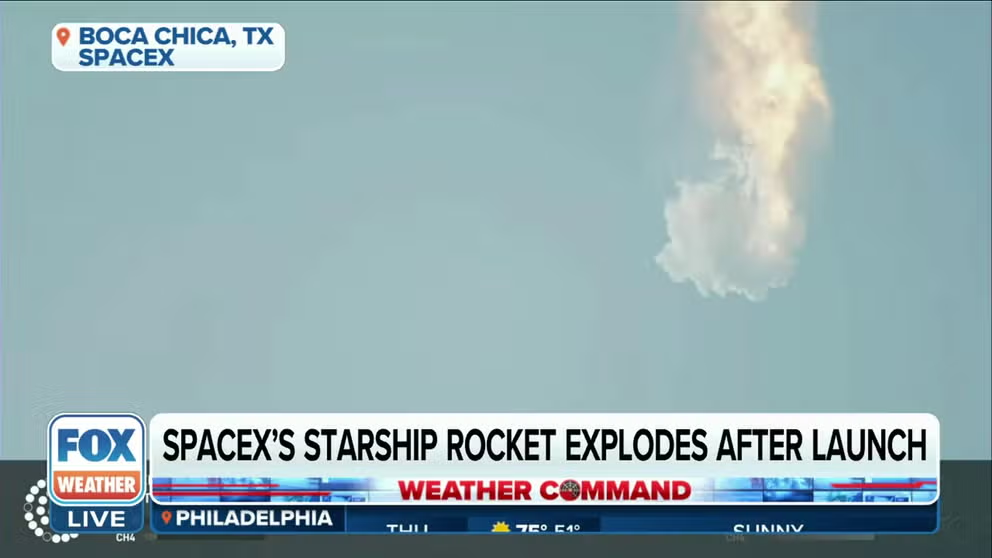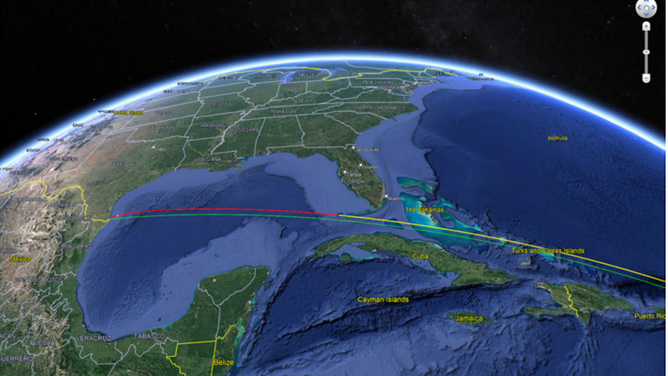SpaceX's Starship explodes mid-flight after launch 'success' of most powerful rocket ever built
The space company said Starship experienced a rapid unscheduled disassembly before stage separation. Teams will now continue to review data and work toward their next flight test.
SpaceX's Starship rocket explodes after launch
SpaceX's Starship exploded mid-flight after launch 'success' of most powerful rocket ever built.
BOCA CHICA, Texas – Thursday's second flight test attempt at the world’s most powerful launch vehicle ever developed was successful following a technical glitch that halted the countdown earlier this week.
The flight test was exciting for those who witnessed the fully integrated SpaceX Starship and Super Heavy rocket liftoff from the SpaceX Starbase in Boca Chica, Texas. At 8:33 a.m. CDT, Starship lifted off, clearing the pad and beach as the vehicle began its nominal flight path.
Shortly after, the space company said Starship experienced a rapid unscheduled disassembly before stage separation. Teams will now continue to review data and work toward their next flight test.
"With a test like this, success comes from what we learn, and today’s test will help us improve Starship’s reliability as SpaceX seeks to make life multi-planetary," the space company said in a statement Thursday morning after liftoff.
The nearly 400-foot-tall fully reusable spacecraft transportation system was designed to carry crew and cargo to Earth's orbit, help humanity return to the moon and travel to Mars and beyond.
It was expected to lift off from a Texas facility on Monday. However, the attempt was scrubbed due to a frozen pressure valve and moved to a wet dress rehearsal.
SpaceX's Starship spacecraft could pave the way for the company to eventually replace the Falcon 9 and Falcon Heavy rockets with the Starship spacecraft and Super Heavy rocket.
NASA'S FIRST CREWED MISSION OF 2023 SUCCESSFULLY LAUNCHES FROM KENNEDY SPACE CENTER

The SpaceX Starship lifts off from the launchpad during a flight test from Starbase in Boca Chica, Texas, on April 20, 2023.
(Patrick T. Fallon / AFP / Getty Images)
Starship is powered by six engines – three Raptor engines and three Raptor Vacuum (RVac) engines, which are designed to be used in the vacuum of space. Super Heavy is powered by 33 Raptor engines, with 13 in the center and 20 engines around the perimeter of the bottom of the powerful booster.
The Raptor engines, which are just over 4 feet tall, power the Starship spacecraft and have twice the thrust of the Falcon 9 Merlin engines.
NASA UNVEILS ARTEMIS II ASTRONAUTS WHO WILL EMBARK ON HISTORIC MISSION AROUND THE MOON
The Super Heavy booster rocket was expected to splash down over the Gulf of Mexico as the Starship spacecraft circled the globe. It would have landed in the Pacific Ocean near Hawaii after the mission.
The space company anticipated the rocket would take about 90 minutes to reach its orbit before splashing down in the Pacific.


